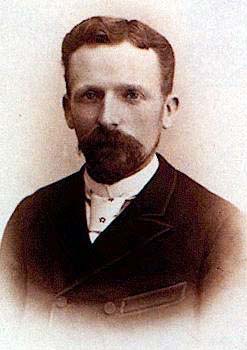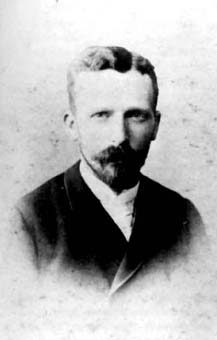|

|
Theo Van Gogh (may
1st 1857- january 25th 1891)
When Theo was born, Vincent must have felt better… At last a living
brother to hold on to, to share things with, to walk with on earth…
Theo loved that clever brother, who taught him many things, who “always
made up funny games”, who took him for long walks through the heath
and moors.
Theo followed the same career, joining the Goupil firm in Paris when Vincent
was in London.
When he visited him in London, they spent “many a blissful day”.
After Theo’s departure, Vincent wrote to him: “ I missed you
a good deal, I found it strange to go back home at midday and see you
were not there.”
This was the beginning of a long correspondence of which Theo kept all
the letters.
Later, when Vincent is out of work, Theo will support him financially,
first irregularly, then by sending him monthly amounts that they fix together.
Theo provides Vincent with paintings, canvas, brushes which he uses a
good deal.
That friendship will keep strong all their life, to such a pitch that
Vincent will regard his work as “achieved by both of us”.
He will always feel indebted towards his brother, and will never cease
thanking him in his letters for the material he sent him.
In his gallery, Theo wants to promote a new generation of artists against
his bosses’ point of view, who only want to exhibit well-known painters,
and who are not interested in the Monet, Manet, Pissaro, Toulouse-lautrec
and so on, whom he defends…
Eventually, he will be granted the permission to dedicate exhibitions
to them in his Montmartre gallery.
All his life, he will be at the bedside of a heart-broken and moneyless
Vincent.
They will disagree at various periods: at the Borinage, for his relationship
with Sien, and will reproach him with not finding a job, with “living
a life of leisure”… He will often be against Vincent, on their
parents’ side, who regarded him as the support of the family. . Theo
won’t survive Vincent’s death and will die six months later
in a fit of madness in the “Willem” pavilion of Anvers hospital.
|
